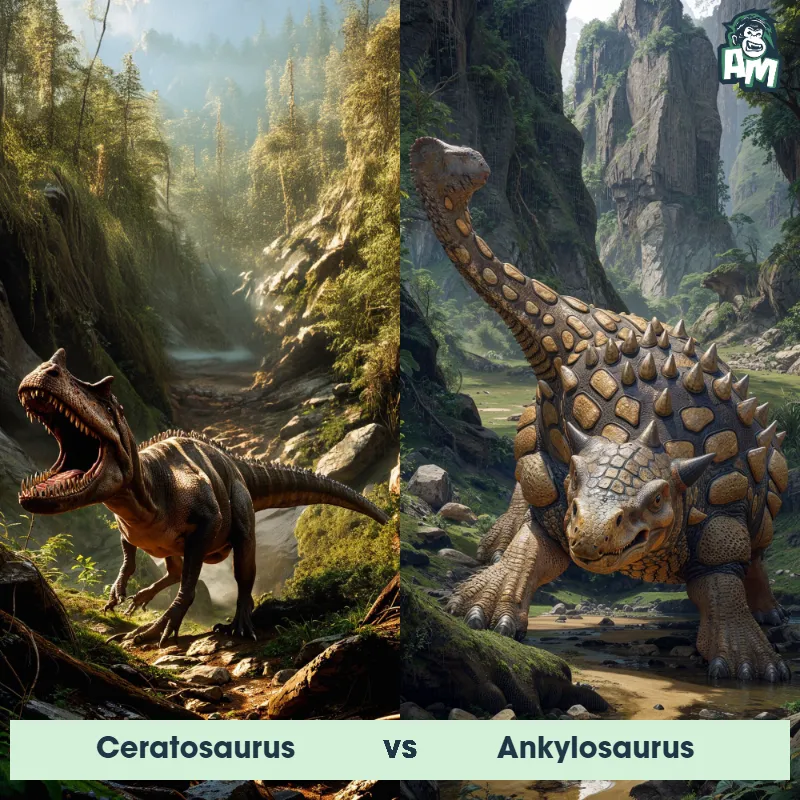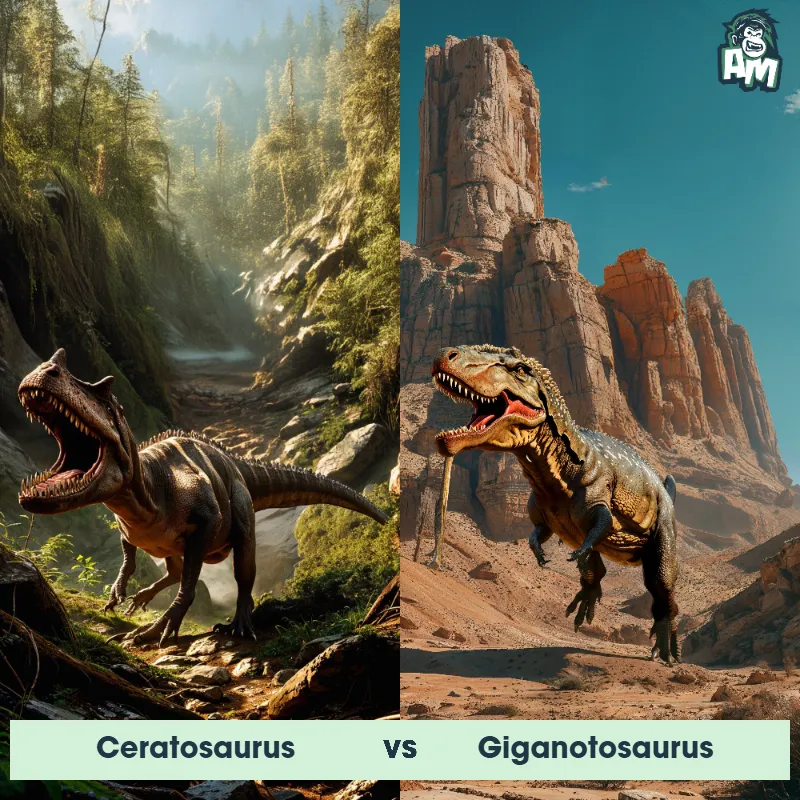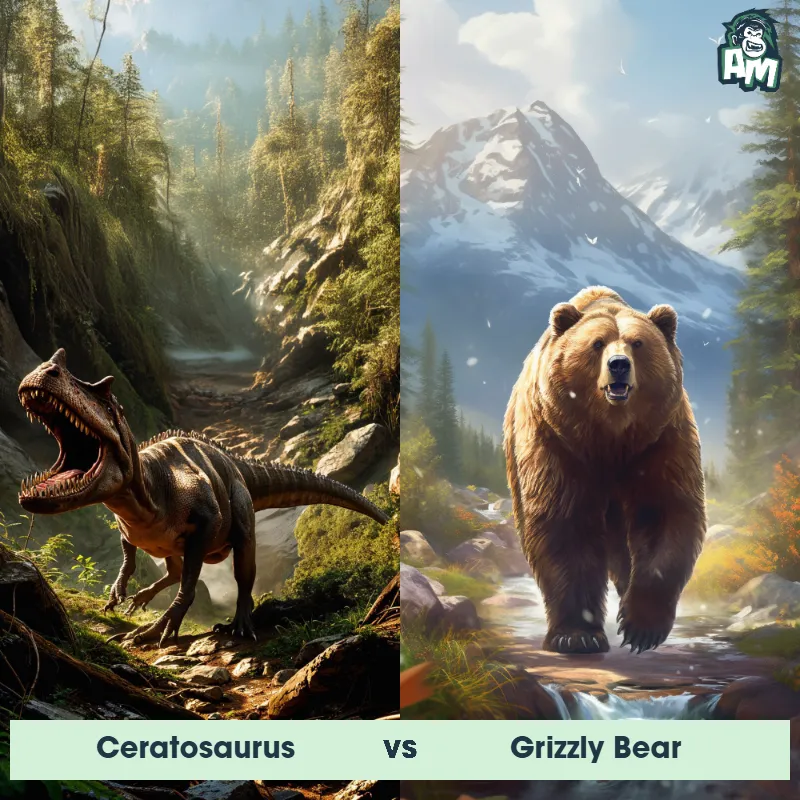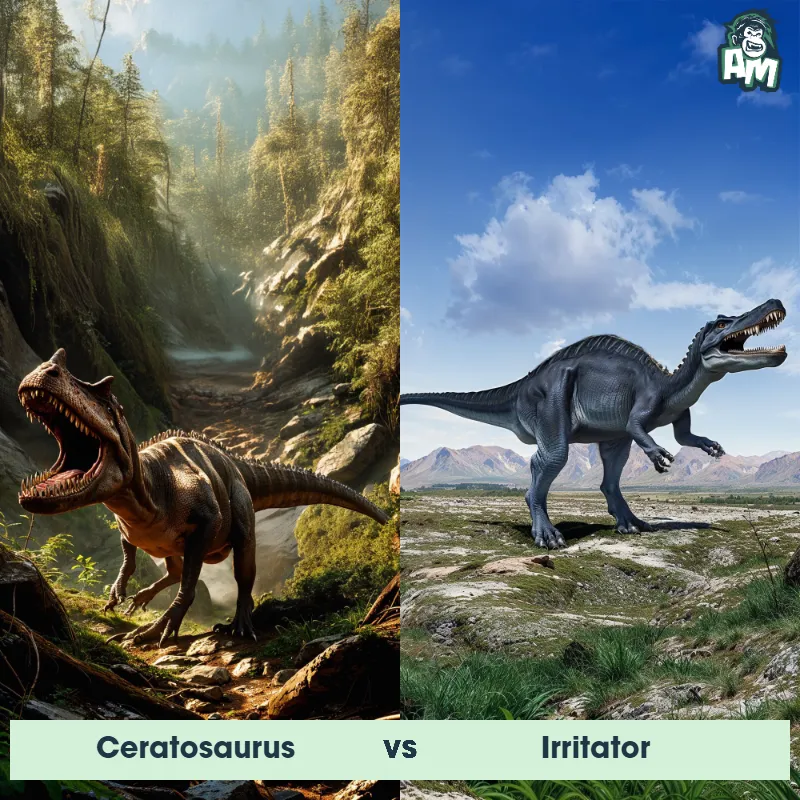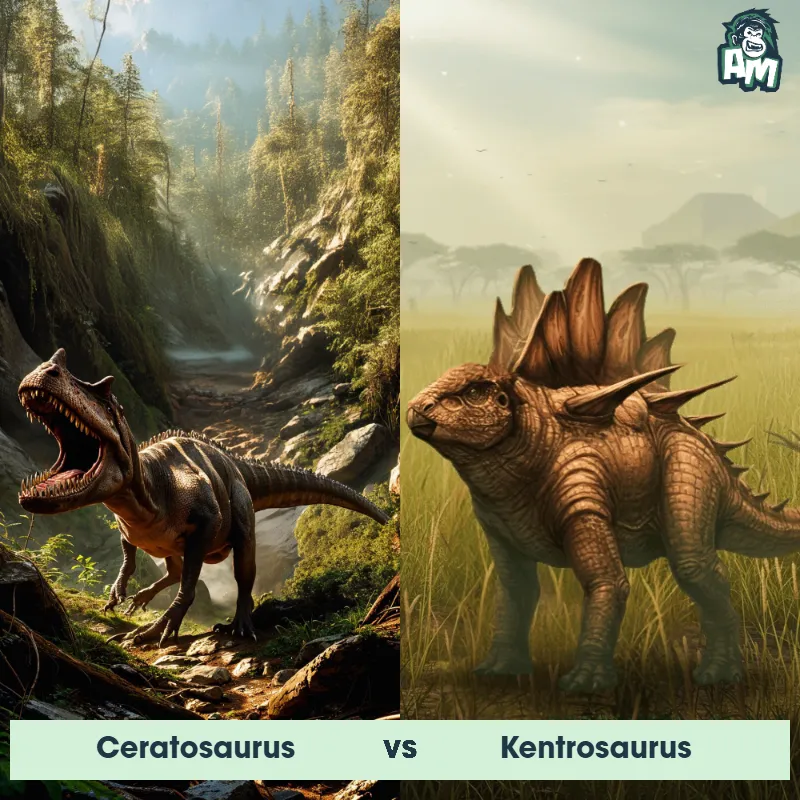The Ceratosaurus
The Ceratosaurus, also known as the "horned lizard," was a mid-sized theropod dinosaur that lived during the Late Jurassic period. It had a prominent horn on its nose and one above each eye, giving it a distinctive appearance. Its long, slender body was supported by strong legs, and it had sharp teeth for hunting prey.
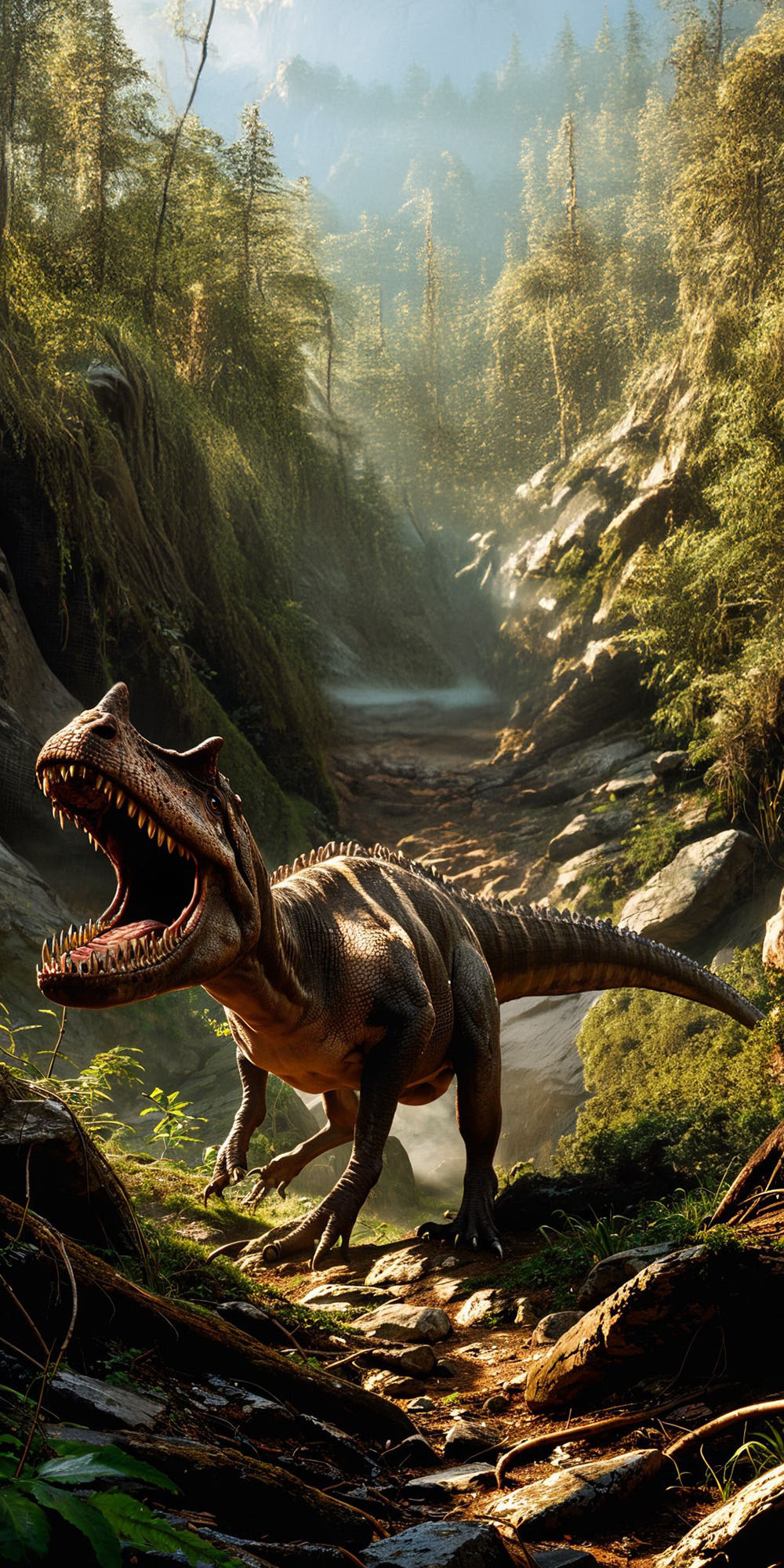
| Ceratosaurus | |
|---|---|
| Size | Around 20 feet (6 meters) |
| Weight | Around 1,000 lbs (450 kg) |
| Speed | 20-25mph (32-40km/h) |
| Key Strength | Powerful hind legs for hunting |
| Biggest Weakness | Short arms compared to other theropods |
| Scientific Name | Ceratosaurus |
| Family | Ceratosauridae |
| Habitat | Forests near rivers |
| Geography | North America, Europe, possibly Africa |
| Diet | Carnivorous |
| Lifespan | 20 years - 30 years |

The Ceratosaurus
The Ceratosaurus, also known as the "horned lizard," was a mid-sized theropod dinosaur that lived during the Late Jurassic period. It had a prominent horn on its nose and one above each eye, giving it a distinctive appearance. Its long, slender body was supported by strong legs, and it had sharp teeth for hunting prey.
Fun Fact: The Ceratosaurus was one of the first theropod dinosaurs to be discovered in North America.
| Ceratosaurus | |
|---|---|
| Size | Around 20 feet (6 meters) |
| Weight | Around 1,000 lbs (450 kg) |
| Speed | 20-25mph (32-40km/h) |
| Key Strength | Powerful hind legs for hunting |
| Biggest Weakness | Short arms compared to other theropods |
| Scientific Name | Ceratosaurus |
| Family | Ceratosauridae |
| Habitat | Forests near rivers |
| Geography | North America, Europe, possibly Africa |
| Diet | Carnivorous |
| Lifespan | 20 years - 30 years |
Ceratosaurus Matchups
We use AI to simulate matchups between the Ceratosaurus and other animals. Our simulation considers size, strength, and natural predatory behaviors to determine the most likely outcome.
Ceratosaurus: Diet, Predators, Aggression, and Defensive Behaviors
What did Ceratosaurus eat?
Ceratosaurus were carnivorous predators, mainly feeding on large herbivorous dinosaurs such as sauropods and ornithopods. They had sharp, serrated teeth that were ideal for tearing through flesh and gripping onto their prey while feeding.
Did Ceratosaurus have any predators?
As apex predators in their environment during the Late Jurassic period, Ceratosaurus likely did not have any natural predators. However, they may have competed with other large predators such as Allosaurus for food sources.
Were Ceratosaurus aggressive?
Ceratosaurus were known to be aggressive predators, hunting and attacking their prey with speed and precision. They were solitary creatures and would fiercely defend their territory from other predators.
Did Ceratosaurus fight?
Ceratosaurus were territorial animals and would engage in fights with other members of their species or rival predators over food, mates, or territory. These fights could be intense and may have involved biting, clawing, and displays of dominance.
How did Ceratosaurus defend themselves?
Ceratosaurus primarily relied on their sharp teeth and strong jaws to defend themselves against potential threats. They may also have used their size and strength to intimidate rivals or predators, as well as their agility and speed to evade attacks.
What was Ceratosaurus' biggest weakness in a fight?
Despite being formidable predators, Ceratosaurus had certain weaknesses in a fight. Their relatively small size compared to other large theropods like Allosaurus or Tyrannosaurus rex could put them at a disadvantage in physical confrontations. Additionally, their arms were short and not well-suited for grabbing or holding onto prey during a fight.
Fun Fact: Despite its intimidating appearance, Ceratosaurus had relatively weak jaws compared to other predatory dinosaurs.
Fun Fact: Studies suggest that Ceratosaurus may have had brightly colored markings on its body, possibly for display or camouflage purposes.



